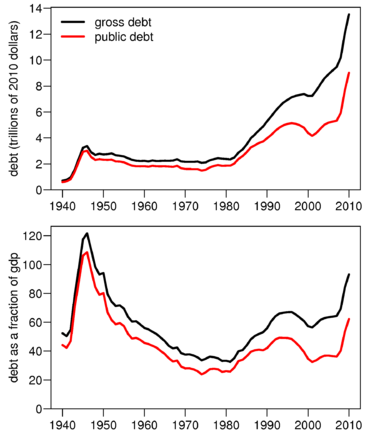
For me, the most remarkable part of writing The Great Crash of 2008 with Ross Garnaut was diving into the murky depths of Wall St’s extraordinary manipulation of money. In the book, we called this “Clever Money”. It was the story of how, over many years, Wall St took the plain vanilla process of securitisation, twisted and stretched it, to produce a batch of ruinous financial instruments: securitisations of securitisations, which bore no resemblance to the goals and form of their constituent parts.
There were other dimensions to the GFC – greed, housing bubbles and global imbalances. But it was the sophistication and scale of clever money embedded in shadow banking that marked the GFC boom and bust cycle out as a unique episode in financial history.
But beneath the technical elements of labyrinthine instruments such as CDOs, hybrids and synthetics, there was another battle going on. It was a struggle for the power to control money.
Banks are the gatekeepers of money. Not just actual money, yours and mine, but money per se. Banks work within and around the rules that we, the people, through our government, have established to determine the value of money. Through the methods of clever money, Wall St seized control of those rules and in doing so, made untold wealth.
It happened some time after the millennium. Private securitisation markets in the US had operated effectively for decades, but suddenly exploded with sub-prime and various other securitisation products, many of which carried the AAA moniker of zero credit risk. In effect, that moniker said that those products were money. Those that bought these products therefore rightly thought that they were lending their own money simply in exchange for more money.
Of course nothing could have been further from the truth. But Wall St had created its own money machine. It clipped the ticket as the various transactions of synthetically stretched money passed though its hands. What power!
The rest is history. Out in the real economy, those changed rules and accelerated transactions blew giant asset bubbles, which, when they reached some critical juncture, simply burst. And the whole collateralised house of cards fell in on itself.
But it isn’t over.
The scam was so enormous, so fundamental, that it tore a hole in the greatest and most dynamic economy in the history of the world. The US government had no choice but to step in and nationalise critical parts of the financial system. If they had not done so we would have faced the unthinkable, a complete collapse in the rules that constitute money. And chaos.
We could argue black and blue about where the US government went wrong in seizing back the rules that control money. Where it should have done more and might have done less. But the fact is it did the right thing, and enough of it, to reassure the world, including you, that the paper in your wallet has value.
And now it faces the consequences.
Before the great Wall St rip-off, US public debt stood at around 65% of US GDP. After the collapse of the scam, US government debt rocketed above 95% of GDP as the public took on the dual tasks of bailing out the debts left behind by Wall St’s collapsed ponzi scheme, as well as stimulating a devastated economy.

The debt-ceiling debacle now gripping the United States is a fight over this debt. The Democrats want to raise the debt ceiling so that they can borrow more and pump that money into the hole in the real economy. The Republicans want to cut the borrowing so that the integrity of the US Budget is preserved and US Treasuries, the key stone of global money, keep their AAA rating and value.
At least, that’s the struggle in theory. If we look a little closer, however, the fight exhibits the same ghostly lineaments that defined the actions of Wall St in the years that they seized power. The debt-ceiling debate is about power and abusing the rules of money to get it.
Consider, the Obama administration has offered the following to resolve the impasse, from Washington Monthly:
* Democrats asked Republicans to pass a clean bill, just as GOP leaders had supported many times in the past. Republicans said, “No.”
* Democrats invited Republicans to Biden-led bipartisan talks. Republicans quit.
* Democrats offered a $2.4 trillion debt-reduction package, 83% of which would come from spending cuts. Republicans said, “No.”
* Democrats sought a Grand Bargain, with more than $4 trillion in savings. Republicans said, “No.”
* Several Democrats offered some preliminary support for the “Gang of Six” blueprint. Republicans said, “No.”
* Many more Democrats signaled support for the McConnell/Reid “Plan B.” Republicans said, “No.”
The sticking point for Republicans is that they simply will not raise taxes to help close the very deficit they so despise. Even though tax rates are at historically record lows as a percentage of GDP.
I understand the need for a balanced Budget to keep the rules of value intact. But, I also know a bald-faced grab for power when I see one.

